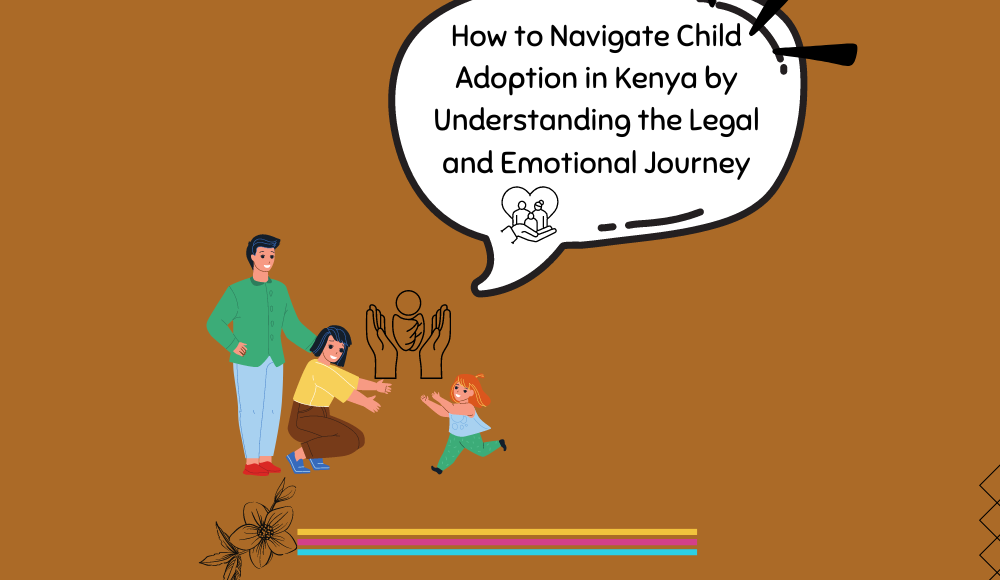
Child adoption in Kenya is a journey filled with hope, compassion, and legal intricacies. Governed by the Children’s Act 2022 and international conventions like the Hague Convention on Intercountry Adoptions, the process is designed to ensure the best interests of the child while facilitating the expansion of loving families.
Types of Adoptions in Kenya
Prospective parents in Kenya have three main avenues for adoption:
- Kinship Adoption: This option is for relatives of the child who seek to provide a permanent home.
- Local Adoption: Reserved for Kenyan nationals residing in the country who wish to adopt children also residing in Kenya.
- Foreign Adoption: Designed for foreign nationals or Kenyan citizens with dual citizenship who wish to adopt children from Kenya.
Eligibility Criteria for Adoption
For a child to be eligible for adoption, specific measures must be met:
- The child must have resided under the continuous care of the applicant within Kenya for at least three consecutive months.
- Eligible children include orphans, abandoned children, or those voluntarily offered for adoption by their biological parents.
- Children, regardless of their citizenship or birthplace, must be at least six weeks old and declared free for adoption by registered societies.
Additionally, prospective adoptive parents must meet certain requirements:
- The applicant must be between the ages of twenty five and sixty five.
- At least one applicant, in the case of a joint application, must be more than twenty one years older than the child.
- Individuals assumed to be mentally unfit or convicted of certain offenses are ineligible to adopt.
The Adoption Process
- Engage with a Registered Adoption Society: The process begins with a visit to a registered adoption society to initiate proceedings.
- Assessment: Both the applicants and the child undergo comprehensive evaluations by the adoption society.
- Home Visit: A crucial step involves a thorough assessment of the applicants’ living conditions to ensure suitability for adoption and the child’s welfare.
- Placement of Child: Upon satisfaction, the child is placed under the care of the applicants for a minimum of three months.
- Application to Court: An official application for adoption is submitted to the High Court, accompanied by requisite consents and reports.
- Guardian Appointment: The court appoints a guardian ad litem to safeguard the child’s interests during legal proceedings.
- Adoption Order: If all criteria are met, the court issues a final adoption order, formalizing the legal transfer of parental rights.
- Registration: The adoption order is registered with the relevant authorities, culminating in the issuance of a certified copy as conclusive evidence of adoption.
Essential Checklist for Adoption
To navigate the adoption process seamlessly, prospective parents must compile a comprehensive checklist, including:
- Home Study Report: A detailed assessment of the home environment and suitability for adoption.
- Recent Photographs: Visual identification of the adopting family.
- Marriage Certificate: Proof of marital status.
- Health and Medical Fitness Certificates: Confirmation of physical wellbeing.
- Financial Status Declaration: Evidence of financial stability.
- Declarations and Undertakings: Commitments to the child’s welfare and compliance with legal requirements.
In conclusion, while child adoption in Kenya involves a rigorous process, it ultimately leads to the creation of loving families and provides vulnerable children with the stability and care they deserve.
Written By Shilla Lwangu

Leave a Reply